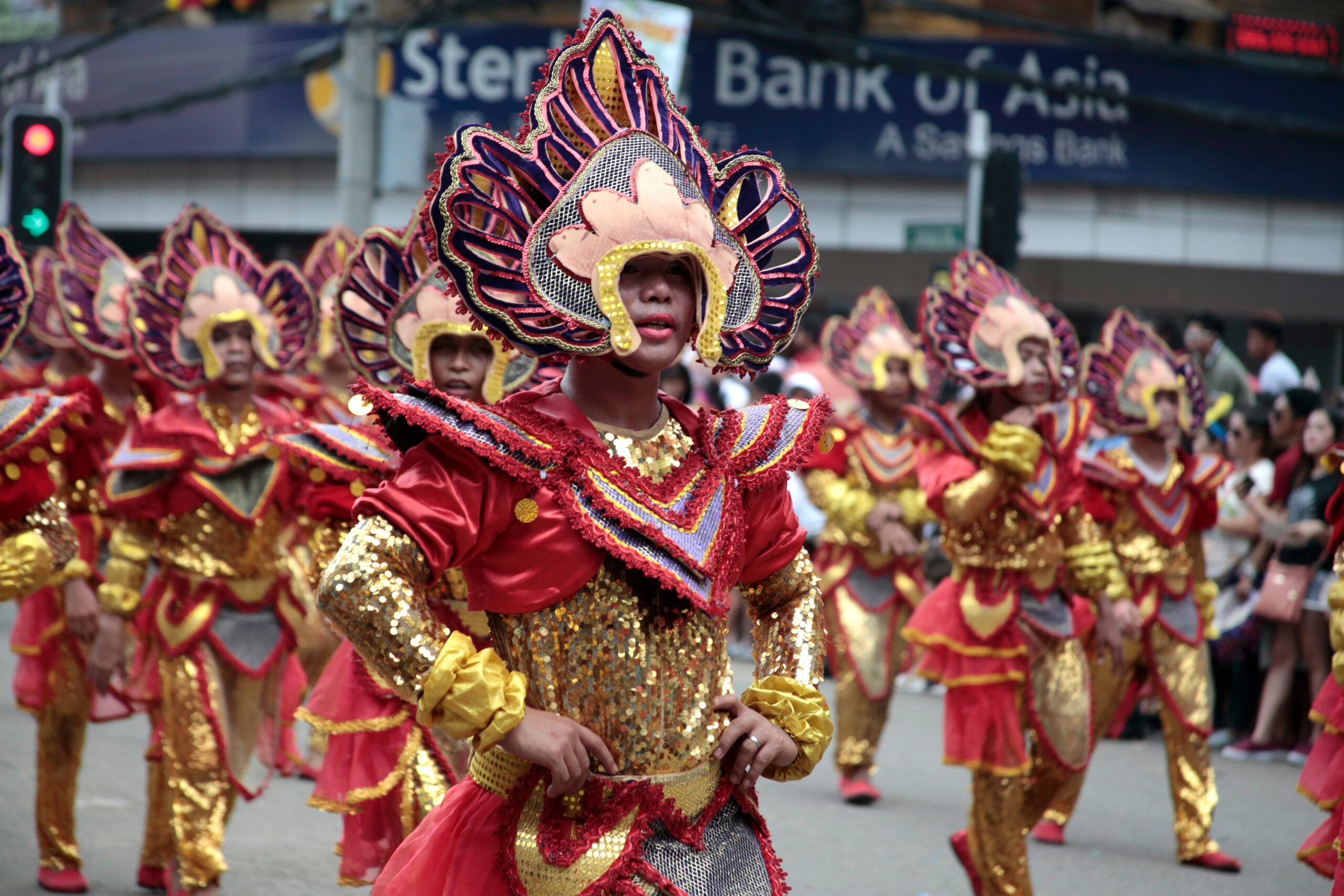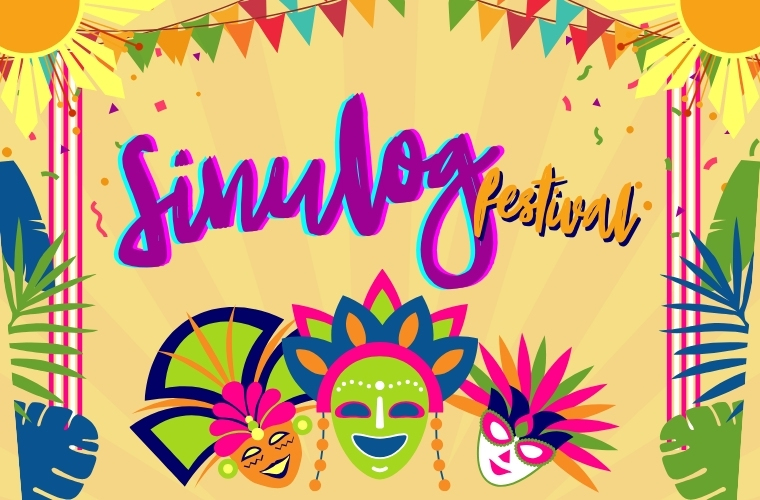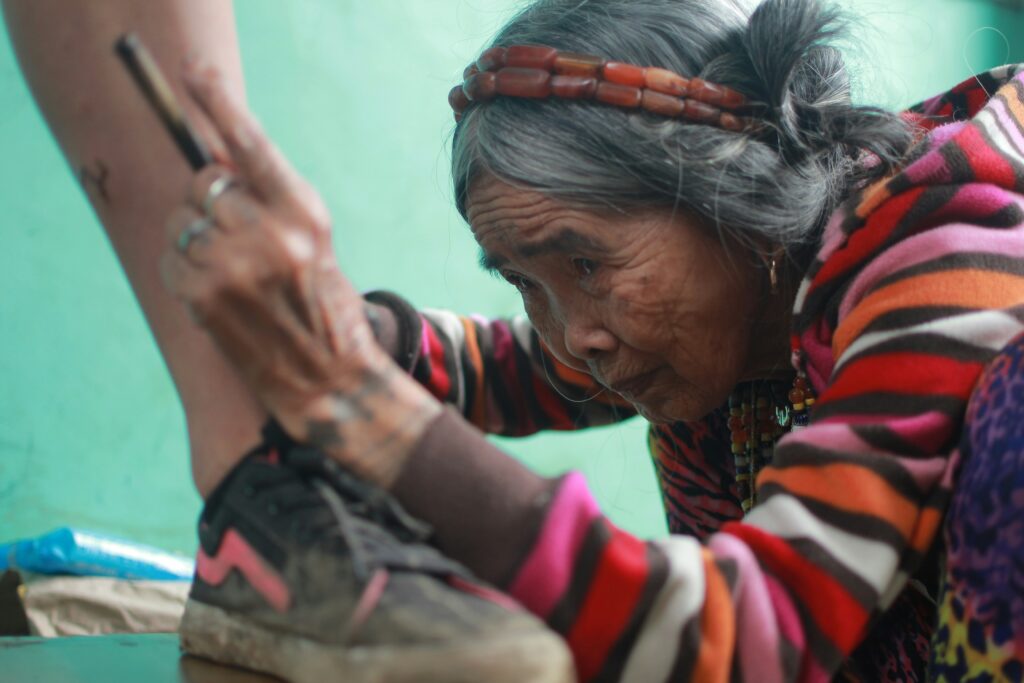
Check it out the Sinulog Festival In The Philippines
Posted in Culture, Destinations, Festivals and Events, Visayas
Introduction to Sinulog Festival

The Sinulog Festival stands as one of the most vibrant and significant cultural celebrations in the Philippines. Rooted in the heart of Cebu City, this annual festival is a grand homage to the Santo Niño, or the Child Jesus, which symbolizes the deep historical and religious ties that bind the local community. The festival traces its origins back to 1521, when Portuguese explorer Ferdinand Magellan gifted the image of the Santo Niño to Queen Juana of Cebu as a baptismal present, marking the Philippines’ introduction to Christianity.
As the years progressed, the Sinulog Festival evolved from a simple religious commemoration into an elaborate celebration that attracts millions of devotees and tourists from all corners of the globe. The term ‘Sinulog’ is derived from the Cebuano word “sulog,” meaning “like water current movement” – a reference to the forward-backward dance steps that mimic the flow of the river. This dance is a central feature of the festival, symbolizing the indigenous people’s acceptance and embrace of Christianity.
The significance of the Sinulog Festival extends beyond its religious foundation. It celebrates Cebu City’s rich cultural heritage, showcasing a fusion of traditional and contemporary elements through colorful parades, street dances, and various cultural presentations. The festival’s grandeur is highlighted by the Sinulog Grand Parade, a spectacular procession featuring elaborately costumed participants who perform the Sinulog dance to rhythmic drumbeats and chants, creating a vibrant and electrifying atmosphere.
Over the decades, the Sinulog Festival has grown exponentially, reflecting the dynamic and festive spirit of the Filipino people. It has become a symbol of unity and communal pride, drawing in participants from different regions and cultures, all coming together to honor the Santo Niño. This evolution has cemented the Sinulog Festival’s status as not only a religious event but also a significant cultural phenomenon, making it one of the most eagerly anticipated and celebrated festivals in the Philippines.
Historical Background
The Sinulog Festival, one of the Philippines’ most vibrant cultural celebrations, has a rich historical tapestry that dates back to pre-colonial times. Originally, the native Cebuanos practiced a ritual dance to honor their anitos or ancestral spirits. This early form of worship involved rhythmic movements that closely resembled the current Sinulog dance steps, characterized by a forward-backward motion, symbolizing the flow of the Cebu River.
The arrival of the Spanish colonizers in the 16th century dramatically transformed the cultural landscape of the Philippines, including the Sinulog Festival. In 1521, Portuguese explorer Ferdinand Magellan, sailing under the Spanish flag, arrived in Cebu. He sought to convert the local population to Christianity and presented an image of the Santo Niño, or the Holy Child, to Rajah Humabon, the ruler of Cebu, and his wife, Hara Humamay, who was later baptized as Queen Juana. This gift marked the birth of Christianity in the region and the integration of the Santo Niño into local religious practices.
The image of the Santo Niño became a powerful symbol of faith for the Cebuanos. It is believed that the image possesses miraculous powers, which further entrenched its significance in the local culture. Over time, the Sinulog Festival evolved, blending indigenous practices with Christian elements. This fusion is vividly reflected in the festival’s rituals and dances, which pay homage to the Santo Niño while retaining the essence of the ancient traditions.
Several historical milestones have shaped the Sinulog Festival into its current form. For instance, the first formal Sinulog parade took place in 1980, organized by the local government of Cebu City to promote cultural preservation and tourism. Since then, the festival has grown exponentially, drawing millions of visitors from around the world. Each year, participants honor the Santo Niño through a grand procession, street dancing, and various cultural performances, making the Sinulog Festival a significant cultural and religious event in the Philippines.
Cultural and Religious Significance
The Sinulog Festival, held annually in Cebu City, is a vibrant celebration that holds deep cultural and religious significance for the Filipino people. This grand event is a unique blend of indigenous traditions and Catholic practices, illustrating the Philippines’ rich history and the harmonious fusion of its diverse cultural influences.
Central to the Sinulog Festival is the veneration of the Santo Niño, or the Child Jesus, a revered figure in Filipino Catholicism. The festival commemorates the Filipino people’s conversion to Christianity, which began with the arrival of Portuguese explorer Ferdinand Magellan in 1521. He presented the Santo Niño to Rajah Humabon and his wife, Hara Amihan, marking the beginning of a profound religious transformation. The Sinulog dance, characterized by its two-step forward and one-step backward movement, symbolizes the people’s pagan past and their conversion to Christianity.
Beyond its religious roots, the Sinulog Festival also serves as a vital expression of Filipino identity and spirituality. The event is a testament to the Filipino people’s resilience, faith, and sense of community. It is an opportunity for Filipinos to honor their ancestors’ traditions while reaffirming their devotion to the Santo Niño. The festival’s vibrant street parades, traditional dances, and elaborate costumes are not just forms of entertainment but are also powerful means of preserving and celebrating the Philippines’ cultural heritage.
Furthermore, the Sinulog Festival plays a crucial role in fostering a sense of unity and pride among Filipinos. It brings together people from all walks of life, both locals and tourists, to participate in the festivities. This collective celebration strengthens social bonds and fosters a shared sense of identity and belonging. The festival’s enduring popularity underscores its importance in the Filipino cultural and religious landscape, making it a cherished tradition that continues to thrive and evolve with each passing year.
The Sinulog Dance and Its Symbolism
The Sinulog Festival is best known for its iconic dance, which is deeply rooted in Filipino culture and history. The dance features a distinctive two-step forward and one-step backward movement, symbolizing the flow of the river. This choreography not only mimics the natural movement of water but also represents the journey of the Filipino people through time—forward in progress but always remembering their past.
The attire worn by the dancers during the Sinulog Festival is equally significant. Traditional costumes are vibrant and colorful, often adorned with intricate patterns and designs. Red and gold are predominant colors, symbolizing bravery and prosperity, respectively. The use of these colors is meant to invoke the blessings of the Santo Niño, the Holy Child, who is the central figure of the festival.
The dance is usually accompanied by rhythmic music that enhances its ceremonial atmosphere. The music is an integral part of the Sinulog Festival, characterized by the beat of drums, gongs, and other indigenous instruments. These instruments create a pulsating rhythm that guides the dancers and captivates the audience, adding to the overall festive spirit.
Each element of the Sinulog dance—from the choreography and costumes to the music—holds deep cultural and symbolic meanings, making it a profound expression of Filipino identity and spirituality. The dance serves as a tribute to the Santo Niño, celebrating the people’s faith and resilience while inviting them to reflect on their collective journey. Through its symbolism and vibrant execution, the Sinulog dance continues to be a captivating highlight of the festival, drawing participants and spectators alike into its rich cultural tapestry.
Main Events and Activities
The Sinulog Festival, celebrated annually in Cebu City, Philippines, is a vibrant display of culture, faith, and community. Central to the festivities is the Sinulog Grand Parade, a day-long event featuring colorful costumes, rhythmic dances, and elaborate floats. This parade is the festival’s highlight, drawing thousands of participants and spectators who revel in the lively atmosphere and infectious energy.
Another key event is the fluvial procession, a solemn yet visually stunning spectacle. This takes place on the eve of the Sinulog Grand Parade, where the revered image of the Santo Niño (Holy Child) is carried on a beautifully adorned boat along the Mactan Channel. Devotees line the shores, offering prayers and songs, creating a deeply moving experience for those in attendance.
Street dances, known locally as “Sinulog sa Kabataan,” are performed throughout the city, showcasing the traditional Sinulog dance—a two-step forward, one-step back movement symbolizing the water flow of Cebu’s Pahina River. Various schools and communities compete in these street dances, adding a competitive yet festive spirit to the celebrations.
The religious aspect of the Sinulog Festival is equally significant, with numerous masses held at the Basilica Minore del Santo Niño, the oldest Roman Catholic church in the Philippines. These masses are attended by throngs of devotees who come to pay homage to the Santo Niño, reflecting the deep spiritual roots of the festival.
The Festival Queen Competition is another highlight, where young women from various dance contingents compete for the coveted title of Sinulog Festival Queen. This competition is not just about beauty; it emphasizes grace, cultural knowledge, and the ability to perform the traditional Sinulog dance with poise.
Throughout the week, visitors can expect a packed schedule of events, including nightly street parties, cultural shows, and food fairs. The culmination of these activities creates an immersive experience, blending merriment with tradition, and providing a unique insight into the rich cultural tapestry of the Philippines.
Food and Souvenirs
The Sinulog Festival, celebrated annually in Cebu City, is not only a feast for the senses but also a gastronomic delight. Among the myriad of traditional Filipino foods that make the festival memorable, lechon stands out as a must-try delicacy. This roasted pig, known for its crispy skin and tender meat, is often considered the centerpiece of Filipino celebrations. Another staple during the festivities is puso, also known as hanging rice, which is rice cooked in a woven palm leaf pouch, making it a convenient and flavorful accompaniment to various dishes.
Local delicacies also play a significant role in the culinary experience of the Sinulog Festival. Tourists and locals alike indulge in treats such as bibingka, a type of rice cake cooked in banana leaves, and otap, a crispy, flaky pastry. Street vendors line the festival routes, offering a variety of snacks and beverages that reflect the rich culinary heritage of the region.
In addition to the culinary delights, the Sinulog Festival offers a plethora of unique souvenirs that serve as perfect mementos of the celebration. Sinulog-themed shirts, often emblazoned with vibrant colors and intricate designs, are popular among festival-goers. Accessories such as bracelets, necklaces, and headbands, often incorporating traditional Filipino patterns and motifs, make for cherished keepsakes. Religious items, particularly those related to the Santo Niño, the patron saint of the festival, are also widely available, including small statues, rosaries, and medallions.
For those seeking the best food and souvenirs, Cebu City’s bustling markets and shopping centers are the ideal destinations. The Taboan Public Market is renowned for its wide selection of local delicacies and dried seafood, while the Carbon Market offers an assortment of fresh produce and artisanal products. For a more curated shopping experience, Ayala Center Cebu and SM City Cebu provide a range of stores selling high-quality Sinulog-themed merchandise and culinary delights.
Overall, the Sinulog Festival’s rich culinary offerings and unique souvenirs provide a deeper connection to the vibrant culture and traditions of the Philippines, making it an unforgettable experience for all who partake in the festivities.
Tips for Attending the Sinulog Festival
The Sinulog Festival is one of the most colorful and vibrant festivals in the Philippines, attracting thousands of visitors each year. To ensure you have an enjoyable and memorable experience, it is essential to plan ahead. Here are some practical tips for attending the Sinulog Festival.
Travel Arrangements: Book your flights and transportation well in advance, as the festival draws a significant crowd, leading to fully booked flights and bus services. If you are flying, aim to arrive a couple of days before the main events to acclimate and explore Cebu City.
Accommodation: Given the influx of visitors, securing accommodation early is crucial. Consider staying in hotels or guesthouses near the parade route for convenience. Alternatively, you may opt for accommodations slightly farther from the city center to avoid the peak crowd, but ensure you have reliable transportation options.
Best Spots to View the Parade: The parade route can get extremely crowded, so arriving early to secure a good spot is advisable. Recommended viewing areas include Fuente Osmeña Circle, Mango Avenue, and the Cebu City Sports Center. These locations offer a clear view of the vibrant floats and street dancers.
Navigating Crowded Streets: Be prepared for dense crowds, particularly on the day of the main procession. Wear comfortable shoes and be vigilant with your belongings to avoid pickpockets. Using local maps and mobile apps to navigate can be immensely helpful.
What to Bring: Pack light but ensure you have essentials such as water, snacks, sunscreen, and a hat or umbrella for sun protection. A portable charger for your mobile devices is also a wise addition, given the long hours you may spend outdoors.
Cultural Etiquette: Respect local customs and traditions. The Sinulog Festival has deep religious significance, so be considerate during religious ceremonies and processions. Wearing modest clothing, particularly when visiting churches, is advisable.
Safety Tips: Stay with your group and establish meeting points in case you get separated. Keep emergency contacts handy and familiarize yourself with the locations of medical stations and police assistance centers along the parade route.
By following these tips, you can navigate the Sinulog Festival with ease, allowing you to fully immerse yourself in the festive atmosphere and create lasting memories.
Conclusion and Reflection
The Sinulog Festival, an annual celebration held in Cebu City, Philippines, stands as a vibrant testament to the country’s rich cultural heritage. Throughout this blog post, we have explored various facets of this grand event, from its historical origins to the breathtaking parade of dancers and the intricate religious rituals. The Sinulog Festival is not merely a display of colorful costumes and lively dances; it is a profound expression of faith, a homage to Señor Santo Niño, and a celebration that unites the community.
As a celebration of faith, Sinulog holds immense significance for the devotees who participate in the rituals and processions. The festival’s roots, tracing back to the introduction of Christianity in the Philippines, highlight its enduring spiritual importance. The devotion of the participants, combined with the vibrant cultural displays, encapsulates the essence of Filipino spirituality and community spirit.
Moreover, the cultural aspect of Sinulog cannot be overstated. The festival serves as a platform for showcasing traditional Filipino music, dance, and art, thereby preserving and promoting the nation’s rich cultural legacy. The grand parade, with its rhythmic Sinulog dance, is a mesmerizing spectacle that draws visitors from all corners of the globe, fostering a deeper appreciation for Filipino traditions.
Community, too, plays a pivotal role in the festival. Sinulog brings together people from various walks of life, creating a sense of unity and shared purpose. The collaborative efforts of the locals in organizing and participating in the festivities underscore the strong communal bonds that define Filipino society.
We encourage readers to experience the Sinulog Festival firsthand, to immerse themselves in its vibrant atmosphere, and to appreciate its deeper meaning. Witnessing the festival in person offers a unique opportunity to connect with the Filipino culture and its people. If you have had the chance to attend the Sinulog Festival, we invite you to share your experiences. For those yet to visit, consider making the journey to Cebu City to partake in this extraordinary celebration of faith, culture, and community.

Go Explore Philippines
Welcome to GoExplorePhilippines.com, your go-to guide for exploring the Philippines. Discover tips, travel guides, and stories about the stunning landscapes, vibrant culture, and delicious cuisine of Luzon, Visayas, Mindanao, and beyond. Join us on an adventure to uncover the hidden gems of the Philippines!











